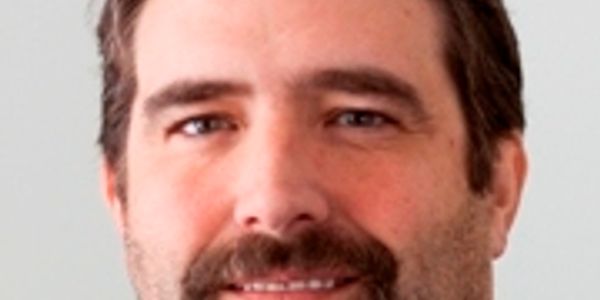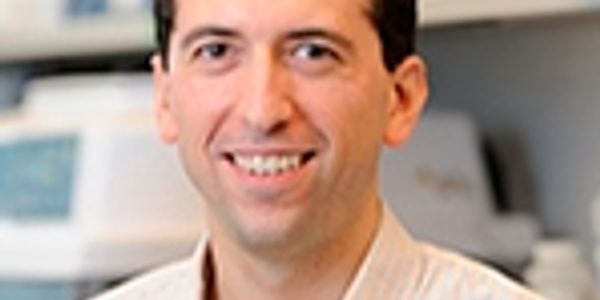Sequencing
Sequencing: is the process of determining the nucleic acid sequence - the order of nucleotides in DNA. It includes any method or technology that is used to determine the order of the four bases: adenine, guanine, cytosine, and thymine.
-
AUG 22, 2013 | 3:00 PMDevelopments in DNA sequencing technology have provided a unique opportunity for diagnosis and discovery of genetic alterations for rare diseases. Partnering with 20 academic centers in the U...Speaker: C Jimmy Lin, MD, PhD, MHSPresented at: Genetics and Genomics Virtual Event Series 2013
Since the introduction of second-generation DNS sequencing technologies in 2007, the cost of genome sequencing has been consistently by 33% per quarter, with the $1000 genome arriving in 2012...
AUG 22, 2013 | 1:00 PM
MicroRNAs are short non-coding cellular regulators of gene expression. Each microRNA controls the expression of a large set of genes, and microRNAs collectively, may regulate more than half o...
AUG 22, 2013 | 12:00 PM
Howard J. Jacob, Ph.D., Founding Director of the Personalized Medicine Program and Human and Molecular Genetics Center and Professor in Physiology and Pediatrics at the Medical College of W...
AUG 22, 2013 | 12:00 PM
C.E. CREDITS
It is widely accepted that approximately 85% of known disease-causing DNA variants affect the exons and splice junctions, which is about 1% of the whole genome. As a result, Clinical Exome Se...
Speaker:
Pinar Bayrak-Toydemir, MD, PhD
Presented at: Genetics and Genomics Virtual Event Series 2013
AUG 22, 2013 | 10:00 AM
C.E. CREDITS
The advent of massively parallel sequencing by next generation sequencing platforms now allow genomic approaches for individualizing healthcare. Genomic sequencing data reveals variants in ge...
AUG 22, 2013 | 10:00 AM
The FarGen project aims to sequence the whole genome of the entire Faroese population. Together with existing genetic records, such a comprehensive sequencing project can significantly improv...
AUG 22, 2013 | 10:00 AM
C.E. CREDITS
In this presentation, exome data from individuals with prostate cancer will be aligned against an annotated reference human genome and SNPs will be identified using DNASTARs SeqMan NGen softw...
AUG 22, 2013 | 9:00 AM
The rapid advancements in next generation sequencing have served the research market very well, delivering more and more sequence for less and less money. While these advancements are still b...
AUG 22, 2013 | 9:00 AM
C.E. CREDITS
There has been considerable debate in the scientific and clinical communities regarding the return of results from genome sequencing to physicians and patients. Questions surrounding which he...
AUG 22, 2013 | 9:00 AM
C.E. CREDITS
During IVF procedures pre-implantation genetic diagnosis (PGD) allows for genetic profiling of embryos prior to replacement. Most PGD procedures during IVF are performed to select chromosomal...
AUG 21, 2013 | 5:00 PM
There are over 1.5 Million fungal species and they play critical role in shaping Earth ecosystems. Better understanding of pathogens and symbionts is critical for a sustainable growth of pla...
AUG 21, 2013 | 5:00 PM
Dr Ivan Brukner entered into genomic era back in 1989 (ex-Yugoslavia), trying to describe and solve repeating sequence "branching motif problem" in building whole genome sequence. Next 5-10...
Approximately 98% of the human genome comprises noncoding DNA, the function of which is largely unknown. Intriguingly, more than 85% of single nucleotide polymorphisms identified to be associ...
AUG 21, 2013 | 4:00 PM
C.E. CREDITS
High throughput transcriptomic analyses have shown that most of the human genome is dynamically transcribed to produce an extraordinary range of overlapping and interlacing intronic, intergen...
Speaker:
John Mattick, PhD,AO, FAA, FRCPA
Presented at: Genetics and Genomics Virtual Event Series 2013
AUG 21, 2013 | 4:00 PM
C.E. CREDITS
The goal of personalized medicine is to customize healthcare to the individual patient. Pharmacogenomics, the analysis of how a patient's genetic makeup affects the individual's response to c...
AUG 21, 2013 | 3:00 PM
C.E. CREDITS
The remarkable diversity we see between different cell types in the human body is governed by the specificity attained through transcriptional and epigenetic regulatory programs. Cancer is a...
AUG 21, 2013 | 2:00 PM
C.E. CREDITS
The human species is particularly prone to chromosome segregation errors during maternal meiosis in the egg and during post zygotic mitosis in the preimplantation embryo. In fact, aneuploidy...
AUG 21, 2013 | 2:00 PM
Increasingly genome sequence knowledge is unraveling the complexity of rare Mendelian disorders offering hope for our children's medical care through better disease diagnosis and ultimately p...
AUG 21, 2013 | 1:00 PM
C.E. CREDITS
In addition to the exciting promise that genome sequencing holds, concerns are also often described. These concerns relate to: privacy/confidentiality of findings; impact of findings on insur...
AUG 21, 2013 | 12:00 PM
Whenever there is cell death, apoptotic cell free DNA fragments appear in the circulation of the host. These fragments, typically 145-160 base pairs in size, represent a minute fraction of to...
AUG 21, 2013 | 12:00 PM
C.E. CREDITS
Sharing sequencing datasets without identifiers has become a common practice in genomics. We recently showed that some datasets can be fully re-identified by using entirely free, publicly acc...
RNASeq has become the primary method for studying changes in gene expression in modern genomics research. By directly sequencing the various types of RNA molecules, including mRNA, ncRNA, an...
Speaker:
Alisa Jackson, Zach Smith, Mary Blair, Dave Delano
Presented at: Genetics and Genomics Virtual Event Series 2013
AUG 21, 2013 | 10:00 AM
C.E. CREDITS
Massively parallel sequencing technology has proven to enable the identification of driver genetic alterations in patients' tumors that may be suppressed by targeted therapies. Through retros...
AUG 22, 2013 | 3:00 PM
Developments in DNA sequencing technology have provided a unique opportunity for diagnosis and discovery of genetic alterations for rare diseases. Partnering with 20 academic centers in the U...
Speaker:
C Jimmy Lin, MD, PhD, MHS
Presented at: Genetics and Genomics Virtual Event Series 2013
Since the introduction of second-generation DNS sequencing technologies in 2007, the cost of genome sequencing has been consistently by 33% per quarter, with the $1000 genome arriving in 2012...
AUG 22, 2013 | 1:00 PM
MicroRNAs are short non-coding cellular regulators of gene expression. Each microRNA controls the expression of a large set of genes, and microRNAs collectively, may regulate more than half o...
AUG 22, 2013 | 12:00 PM
Howard J. Jacob, Ph.D., Founding Director of the Personalized Medicine Program and Human and Molecular Genetics Center and Professor in Physiology and Pediatrics at the Medical College of W...
AUG 22, 2013 | 12:00 PM
C.E. CREDITS
It is widely accepted that approximately 85% of known disease-causing DNA variants affect the exons and splice junctions, which is about 1% of the whole genome. As a result, Clinical Exome Se...
Speaker:
Pinar Bayrak-Toydemir, MD, PhD
Presented at: Genetics and Genomics Virtual Event Series 2013
AUG 22, 2013 | 10:00 AM
C.E. CREDITS
The advent of massively parallel sequencing by next generation sequencing platforms now allow genomic approaches for individualizing healthcare. Genomic sequencing data reveals variants in ge...
AUG 22, 2013 | 10:00 AM
The FarGen project aims to sequence the whole genome of the entire Faroese population. Together with existing genetic records, such a comprehensive sequencing project can significantly improv...
AUG 22, 2013 | 10:00 AM
C.E. CREDITS
In this presentation, exome data from individuals with prostate cancer will be aligned against an annotated reference human genome and SNPs will be identified using DNASTARs SeqMan NGen softw...
AUG 22, 2013 | 9:00 AM
The rapid advancements in next generation sequencing have served the research market very well, delivering more and more sequence for less and less money. While these advancements are still b...
AUG 22, 2013 | 9:00 AM
C.E. CREDITS
There has been considerable debate in the scientific and clinical communities regarding the return of results from genome sequencing to physicians and patients. Questions surrounding which he...
AUG 22, 2013 | 9:00 AM
C.E. CREDITS
During IVF procedures pre-implantation genetic diagnosis (PGD) allows for genetic profiling of embryos prior to replacement. Most PGD procedures during IVF are performed to select chromosomal...
AUG 21, 2013 | 5:00 PM
There are over 1.5 Million fungal species and they play critical role in shaping Earth ecosystems. Better understanding of pathogens and symbionts is critical for a sustainable growth of pla...
AUG 21, 2013 | 5:00 PM
Dr Ivan Brukner entered into genomic era back in 1989 (ex-Yugoslavia), trying to describe and solve repeating sequence "branching motif problem" in building whole genome sequence. Next 5-10...
Approximately 98% of the human genome comprises noncoding DNA, the function of which is largely unknown. Intriguingly, more than 85% of single nucleotide polymorphisms identified to be associ...
AUG 21, 2013 | 4:00 PM
C.E. CREDITS
High throughput transcriptomic analyses have shown that most of the human genome is dynamically transcribed to produce an extraordinary range of overlapping and interlacing intronic, intergen...
Speaker:
John Mattick, PhD,AO, FAA, FRCPA
Presented at: Genetics and Genomics Virtual Event Series 2013
AUG 21, 2013 | 4:00 PM
C.E. CREDITS
The goal of personalized medicine is to customize healthcare to the individual patient. Pharmacogenomics, the analysis of how a patient's genetic makeup affects the individual's response to c...
AUG 21, 2013 | 3:00 PM
C.E. CREDITS
The remarkable diversity we see between different cell types in the human body is governed by the specificity attained through transcriptional and epigenetic regulatory programs. Cancer is a...
AUG 21, 2013 | 2:00 PM
C.E. CREDITS
The human species is particularly prone to chromosome segregation errors during maternal meiosis in the egg and during post zygotic mitosis in the preimplantation embryo. In fact, aneuploidy...
AUG 21, 2013 | 2:00 PM
Increasingly genome sequence knowledge is unraveling the complexity of rare Mendelian disorders offering hope for our children's medical care through better disease diagnosis and ultimately p...
AUG 21, 2013 | 1:00 PM
C.E. CREDITS
In addition to the exciting promise that genome sequencing holds, concerns are also often described. These concerns relate to: privacy/confidentiality of findings; impact of findings on insur...
AUG 21, 2013 | 12:00 PM
Whenever there is cell death, apoptotic cell free DNA fragments appear in the circulation of the host. These fragments, typically 145-160 base pairs in size, represent a minute fraction of to...
AUG 21, 2013 | 12:00 PM
C.E. CREDITS
Sharing sequencing datasets without identifiers has become a common practice in genomics. We recently showed that some datasets can be fully re-identified by using entirely free, publicly acc...
RNASeq has become the primary method for studying changes in gene expression in modern genomics research. By directly sequencing the various types of RNA molecules, including mRNA, ncRNA, an...
Speaker:
Alisa Jackson, Zach Smith, Mary Blair, Dave Delano
Presented at: Genetics and Genomics Virtual Event Series 2013
AUG 21, 2013 | 10:00 AM
C.E. CREDITS
Massively parallel sequencing technology has proven to enable the identification of driver genetic alterations in patients' tumors that may be suppressed by targeted therapies. Through retros...
























